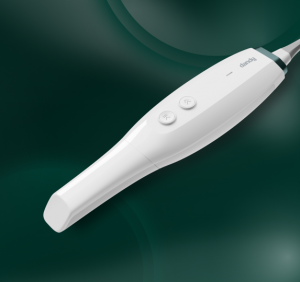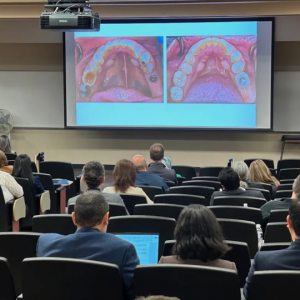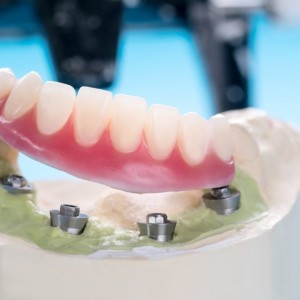
CAD-CAM VS hot-press lithium disilicate crowns: which guarantees a better marginal fit?
Simona Chirico
Increasing demand for esthetic dental restorations has led to the popularity of ceramic restoration systems. Among these the most used is lithium disilicate, which can be produced either in the laboratory with a hot-press technique, or with CAD/CAM system.
The quality of lithium disilicate crowns produced by the CAD/CAM system has always been discussed. From what emerges in literature, there are no differences between the two methods from the structural point of view and the mechanical characteristics. But for clinical success and longevity?
In the study published in The Journal of Prosthetic Dentistry in 2019, Dolev et al. took this aspect into consideration, evaluating the marginal fit by calculating the marginal discrepancy (MD) (the perpendicular measurement from the cervical margin of the casting to the preparation margin) and the absolute marginal discrepancy (AMD) (angular combination of the MD and the extension error - overextension or underextension-) of lithium disilicate crowns produced by the hot-press and CAD-CAM techniques. Acceptable MD values are included between 50 e 120 mm.
MATERIALS AND METHODS
Thirty typodont teeth were divided into 2 groups. Fifteen teeth were scanned with the CEREC Omnicam intraoral scanner, and crowns were fabricated with the CEREC MC XL chairside CAD-CAM milling unit from IPS e.max CAD blocks. Fifteen typodont teeth were sent to a dental laboratory, and lithium disilicate crowns were fabricated from IPS e.max press ingots using the hot-press technique. The 30 crowns were cemented with a self-adhesive cement (RelyX Unicem) and then sectioned with a precision saw. The MD and AMD were measured for each crown with a light microscope.
RESULTS
Mean MD and AMD values were evaluated by analyzing 8 specific points of the crowns: disto-buccal (DB), disto-lingual (DL), mesio-buccal (MB), mesio-lingual (ML), mid-buccal location ( Mid-B), mid-lingual location (Mid-L), mid-mesial localtion (Mid-M), mid-distal location (Mid-L).
As expected, the MD values were lower than the AMD values because the AMD is an angular combination of the MD and the extension error. The mean AMD values were lower for the crowns fabricated using the CAD-CAM technique, except at the Mid-L/ML and Mid-D/DL locations.
The CAD-CAM technique produced an overall mean ±standard error (SE) AMD width of 115 ±4 mm, whereas the hot-press technique produced an overall mean ±SE AMD width of 130 ±5 mm.
The overall mean ±SE MD values were similar: 87 ±3 mm for the crowns fabricated by CAD-CAM and 90 ±4 mm for the crowns fabricated by the hot-press technique.
CONCLUSIONS
Even if the study concludes that there isn’t a statistically significant differences in MD and AMD between the CAD-CAM and hot-press fabrication methods, we can see how the best results are recorded by the lithium disilicate produced with CAD/CAM method.
For additional informations:
Comparison of marginal fit between CAD-CAM and hot-press lithium disilicate crowns
 Related articles
Related articles
Digital Dentistry 04 November 2025
Digitalisation is an expanding field in dentistry and implementation of digital teaching methods in dental education is an essential part of modern education.
News 03 November 2025
Dandy, a fully digital dental lab, today unveiled two new products for digital dentistry: the revolutionary Dandy Vision intraoral scanner and the powerful.
Editorials 02 October 2025
U-M School of Dentistry hosts national symposium on digital dentistry education
The University of Michigan School of Dentistry hosted a national Digital Dentistry Educators Symposium last week that drew faculty and leaders from 35 dental schools around the country.
Digital Dentistry 29 August 2025
Digital dentistry: The new state of the art — Is it disruptive or destructive?
Summarizing the new state of the art of digital dentistry, opens exploration of the type and extent of innovations and technological advances that have impacted – and improved – dentistry.
Endodontics 15 August 2025
Feasibility of Implementing Digital Dentistry Section in Dental Clinic of a Military Centre
Digital dentistry is not the wave of the future, it is happening now. Whether a dentist embraces the new technology determines the quality of treatment and possibly his future; for this reason,...
 Read more
Read more
Prosthodontics 17 November 2025
The purpose of this report is to describe a new technique to fabricate and deliver an implant-supported fixed prosthesis to the patient on the day of surgery, and to propose a protocol for the...
Editorials 17 November 2025
The Langkamp Allison Award recognizes a Pitt Dental Medicine third-year dental student interested in pursuing a career in dental education.
Products 17 November 2025
VELMENI today unveiled VELMENI Voice, an AI-driven voice recognition tool designed to transform periodontal charting and clinical documentation.
News 17 November 2025
Angelalign Technology Inc. (6699.HK) (“Angel”) recently announced the expansion of its flexible iOrtho platform to include direct integration with the Dexis, Shining 3D, and Panda scanners.
News 17 November 2025
Following the first FDA clearance for technology that measures internal mobility in teeth, Perimetrics CEO and Chairman Robert Hayman is once again leading dentistry into a new era with InnerView, a...














